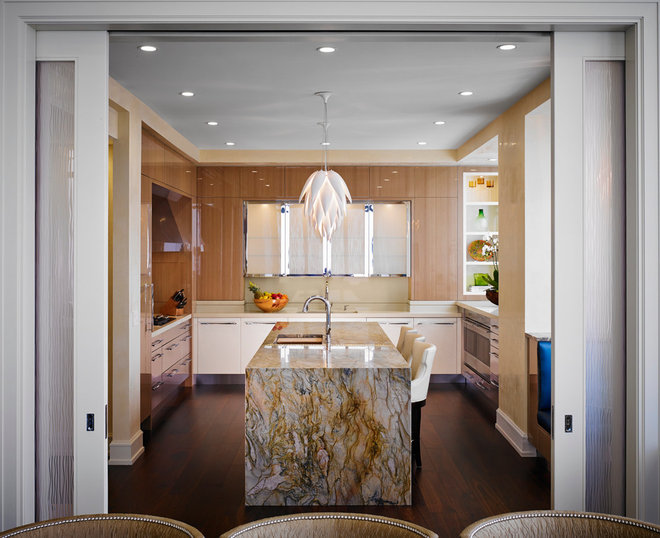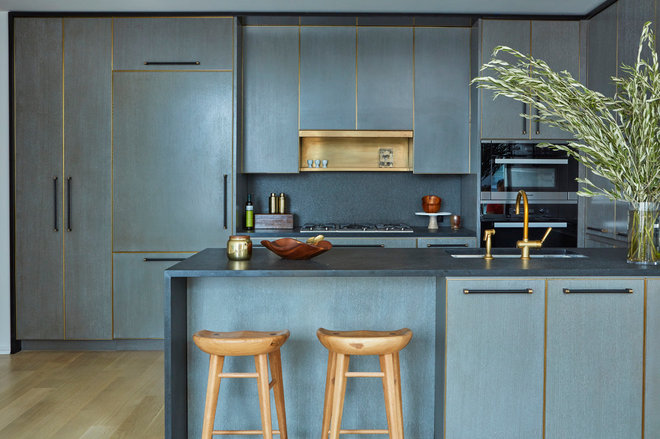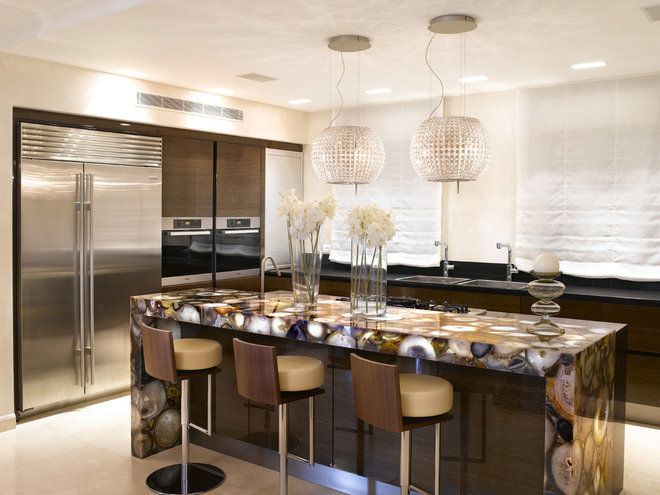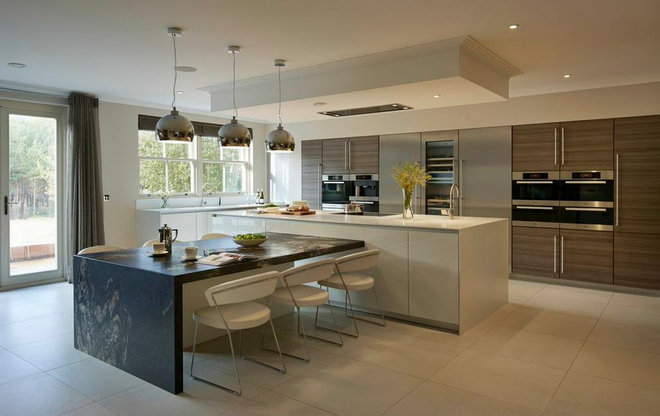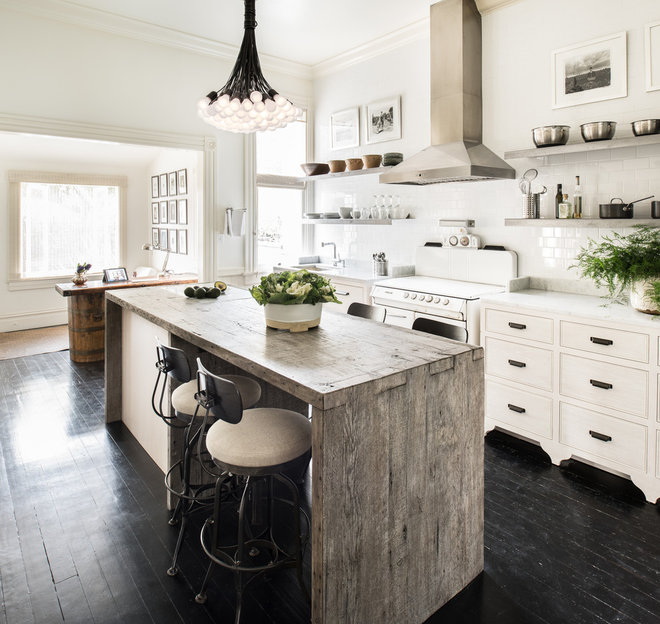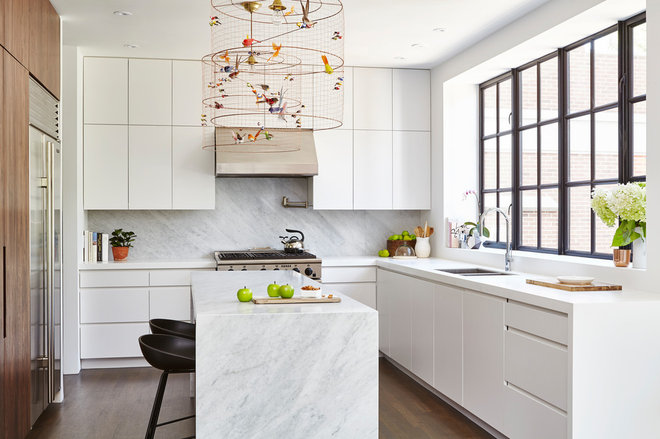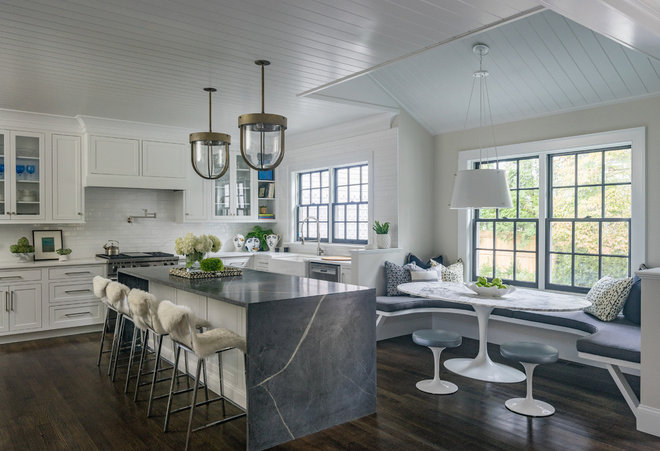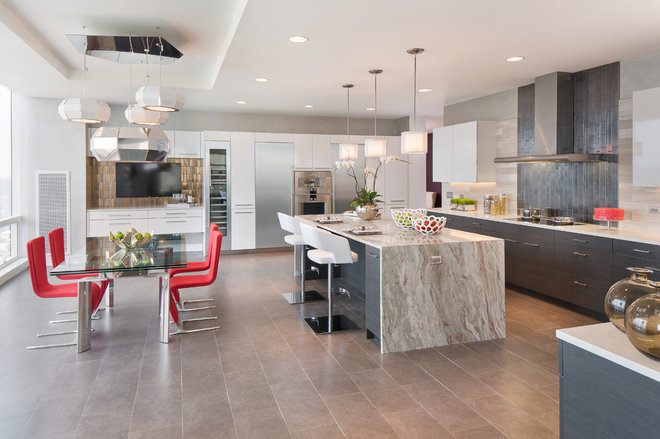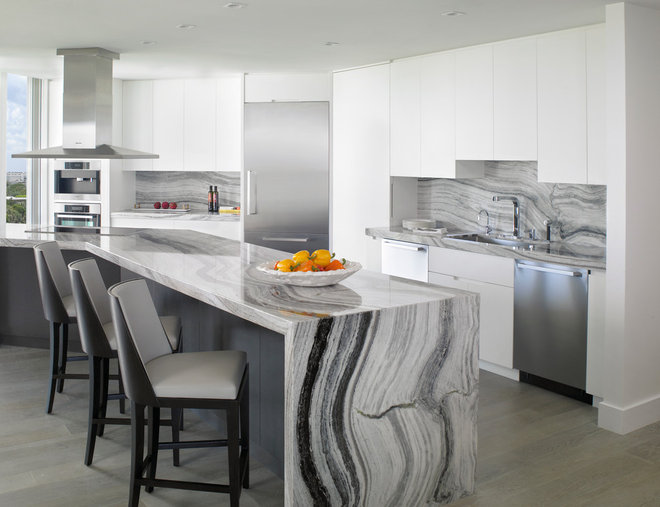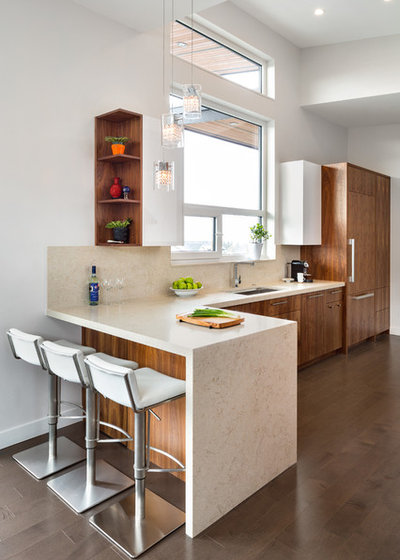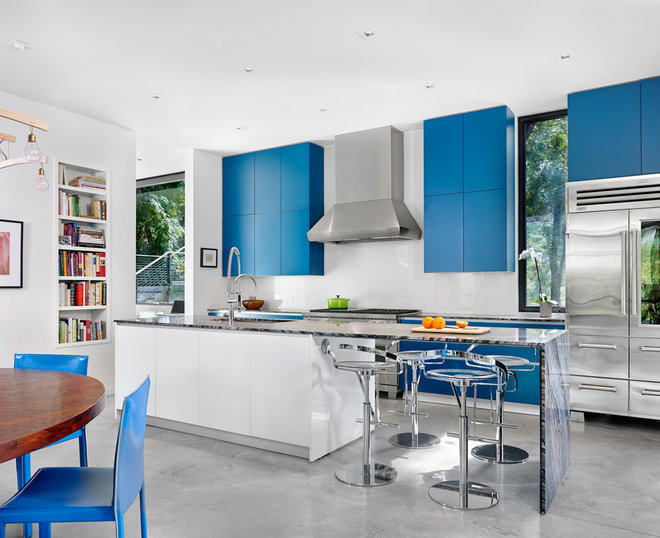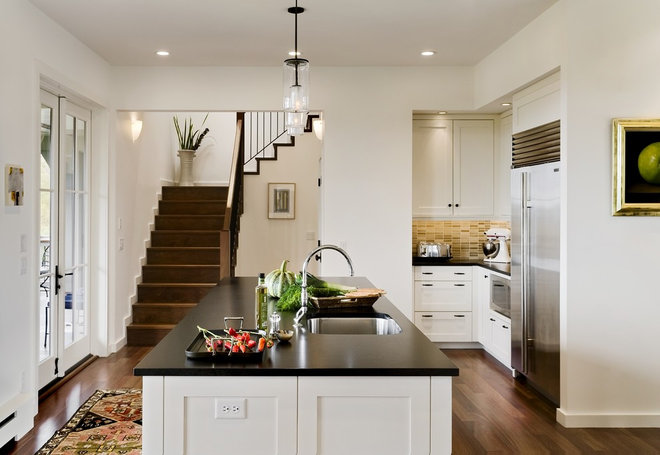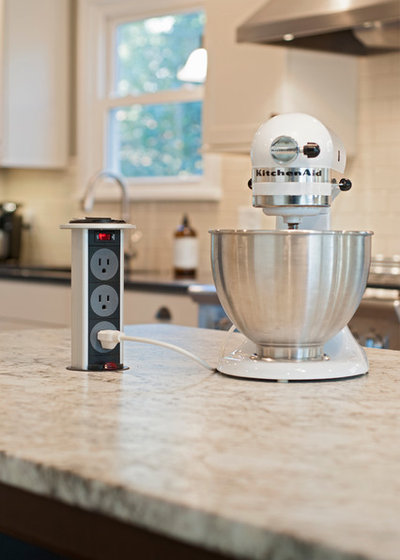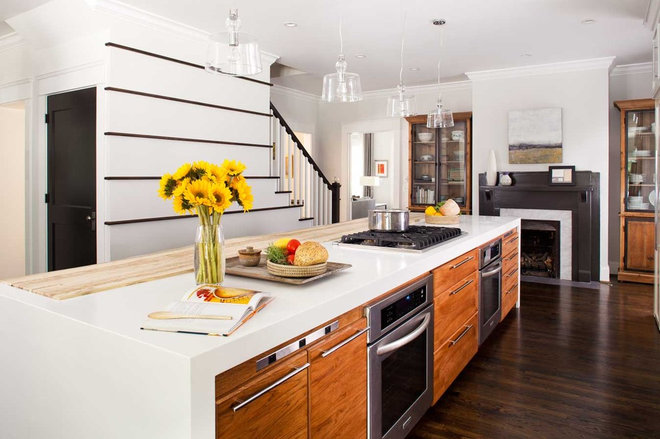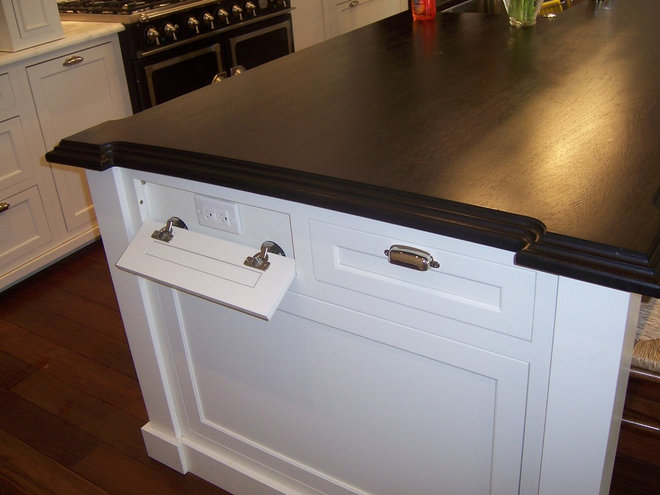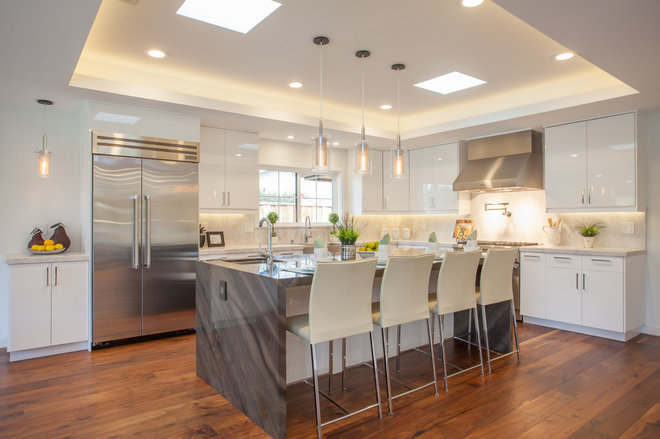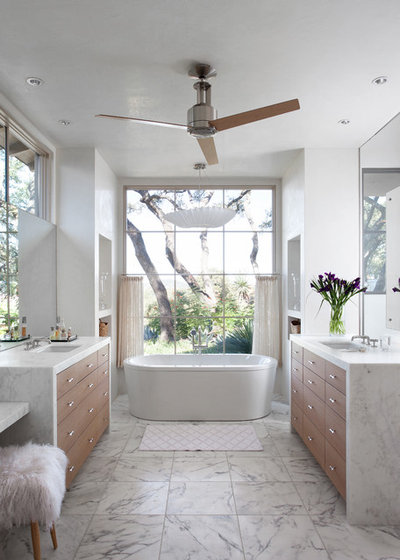Make a Splash in Your Kitchen With a Waterfall Countertop
Traditionally, a countertop is a horizontal surface that ends at the edge of the cabinets. With waterfall countertops, the material used on the horizontal surface continues vertically to the floor, essentially wrapping the side of the cabinet. The continuity of the material, particularly when it is stone, can create a dramatic focal point in the kitchen. Read on to see if this look might work for you, and what elements you’ll want to consider.
With a waterfall edge, the veining in natural stone or quartz is visible on the horizontal plane, then spills over the edge in a vertical drop to the floor. This vertical view of the counter highlights and dramatizes the beauty of the stone’s veining, creating a focal point in the kitchen. Often, this focal point is also visible from other rooms, as shown in this photo.
Though stone remains a top choice for waterfall counters, recently materials like wood and concrete have also been gaining popularity.
Pay attention to edge thickness. Waterfall countertops are available in various thicknesses, and the choice really depends on your personal preference. Some edges are only the thickness of the slab itself, as shown in this photo of the blue monochromatic kitchen with brass accents and light wood stools.
Find countertop pros in your area
Contemporary kitchen. Waterfall countertops are most often found in contemporary kitchens due to their linear nature and clean lines, which are hallmarks of more contemporary style. The first three images in this story show contemporary kitchens with waterfall countertops.
How to Design a Warm Contemporary Kitchen
Transitional kitchen. This photo of a transitional-style kitchen shows that with a little imagination, the waterfall look can work outside of a contemporary kitchen. The island features a distressed-wood waterfall countertop juxtaposed with an elegant white marble countertop on the perimeter cabinetry. The wood waterfall edge adds character and interest to this transitional white kitchen, which blends traditional and contemporary styles.
There is a plethora of white kitchens being created these days, so my goal as a designer is to make each one feel unique. One way is to use different countertop materials for the perimeter countertop and the island — whether classic marble or dramatic stone. Another is to mix wood with white. The following photos are of three white kitchens, each with different perimeter and island countertop materials, each evoking a different mood.
1. Muted. The soft coloring of the marble waterfall island gently blends with and complements the white cabinetry. It also coordinates with the backsplash stone, creating a harmonious look. The birdcage pendants, with their colorful occupants, add a touch of whimsy to this otherwise muted kitchen.
13 Fresh Ways With a White Kitchen
Waterfall countertops are most frequently used on islands, but not always. Here are some other options.
1. End of a cabinet run. A waterfall edge is an effective way to punctuate the end of a cabinet run. This orange quartz countertop coordinates with the pendant and kitchen chairs to add a pop of color to this white kitchen.
Find acrylic and plastic counter and bar stools
Depending where you live, you may be required by code to have one or two outlets on your island. On a traditional island, these electrical outlets are often embedded in the island’s side panel for easy accessibility, as seen in this photo. Here, a white outlet blends into the surrounding white end panel.
But where should you place an outlet on a waterfall island to avoid distracting from the pattern in the stone? There is no best place, but here are a few options to consider.
Browse pop-up outlets
Waterfall edges are not relegated to the kitchen. They work equally well in the bathroom. When the counter and floor are of the same or similar material, the eye sees a continuous line. That smooth transition in materials can contribute to a luxurious, spa-like atmosphere for a bathroom, as shown in this photo.
Cost: If you like this look, it’s important to know that waterfall countertops are more costly due to the added material for the sides, as well as the additional labor for fabrication. You’ll want to price all of this out before you commit.
